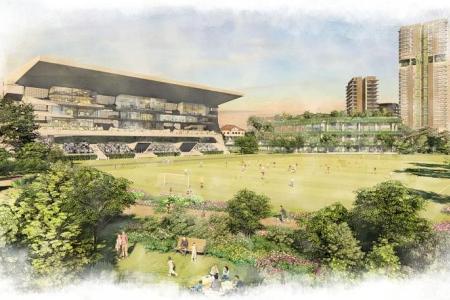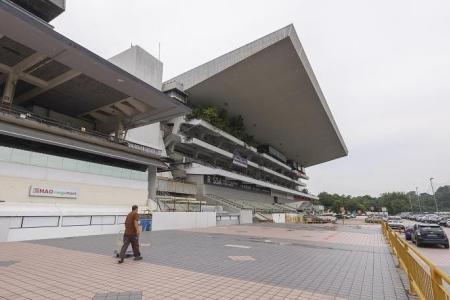Up to 20,000 homes planned for Turf City
The first public housing units in Bukit Timah in about 40 years will be built in Turf City, as part of plans to develop 15,000 to 20,000 new homes on the former racecourse site over the next two to three decades.
The upcoming estate will be “inclusive and highly accessible” with both public and private housing, said Minister for National Development Desmond Lee on May 23 at The URA Centre, where he launched an exhibition showcasing plans for Bukit Timah Turf City.
Mr Lee said the addition of public homes in Bukit Timah will meet “the growing aspirations among Singaporeans to live closer to their workplaces in the city”.
The Urban Redevelopment Authority (URA) said the new estate will be car-lite, pedestrian-friendly and well-served by public transport, with good walking and cycling connections.
Future residents will be within a 10-minute walk of either of two MRT stations – Sixth Avenue on the Downtown Line, or Turf City on the upcoming Cross Island Line. Mr Lee said the latter will be completed in 2032.
URA said the estate will be developed over time, starting with areas closer to existing transport nodes along Dunearn Road – where Sixth Avenue MRT station is located.
Between 1933 and 1999, Bukit Timah Turf City was Singapore’s second racecourse, before the Turf Club relocated to Kranji to ease traffic congestion in the area.
The 176ha Bukit Timah site has been largely zoned for residential use since URA’s 1998 masterplan, and was leased out for interim lifestyle and recreational uses until end-2023.
To accommodate an anticipated growth in traffic as the estate is developed, road improvement works will be carried out at Dunearn Road, Bukit Timah Road and Eng Neo Avenue, URA said.
“Agencies are also studying the technical feasibility and environmental impact of implementing a new exit ramp from PIE, towards Tuas, as an alternative access to the site and to facilitate the distribution of traffic in the area,” said the agency.
URA said the estate will be planned as a “10-minute neighbourhood”, with most amenities such as shops, community and recreational facilities and parks within a 10-minute walk of future homes.
Fewer parking spaces will be provided to “prioritise space for public amenities, greenery and housing”, in line with plans to make the estate car-lite, URA added.
As part of planning for the site, two studies – one assessing future development’s the impact on heritage, and the other on the environment of the area – were conducted.
Key strategies to minimise future developments’ impact include potentially keeping 27 heritage buildings and structures in the estate, as well as retaining most of Eng Neo Avenue Forest and Bukit Tinggi. Studies had found that these two forested areas house flora and fauna species of conservation significance.
To respect the surrounding environment, said URA, new developments will have to adhere to urban design guidelines, such as keeping building heights lower when they are located near key heritage buildings, green spaces and existing low-rise housing areas.
Centrally-located areas within the estate, such as those closer to MRT stations, will be used for high-rise housing to allow more to live near transport nodes, said URA.
URA said four distinctive neighbourhoods are likely to be built in Bukit Timah Turf City, “each featuring new public spaces integrated with existing landscape and heritage buildings to reflect their unique characters while promoting community bonding”.
The first, Racecourse Neighbourhood, will be anchored by two historic grandstands and a new central open space reminiscent of the racecourse’s original racetracks.
This neighbourhood will be Bukit Timah Turf City’s civic heart, and provide “a wide variety of large-scale sports, recreational, commercial and community amenities” within a 5-minute walk of the Turf City MRT station.
Stables Communes, the second neighbourhood, will include former workers quarters and stables that will house small-scale lifestyle offerings.
Located at Dunearn Road, this neighbourhood will “take after the existing street character of Bukit Timah Road”, said URA.
The third neighbourhood, Saddle Club Knolls, will “be defined by its undulating terrain and surrounding forests”.
Here, the former Bukit Timah Saddle Club and its surrounding landscape will be a lifestyle node, while the old Fairways Quarters could host family-friendly activities.
The last neighbourhood, Tinggi Hills, located within former golf course land, will have homes with good views of the Central Catchment Nature Reserve and Bukit Tinggi.
The Bukit Timah Turf City exhibition at The URA Centre in Maxwell Road will run till July 23, and the public can share their feedback on the plans through this feedback form.
Get The New Paper on your phone with the free TNP app. Download from the Apple App Store or Google Play Store now



